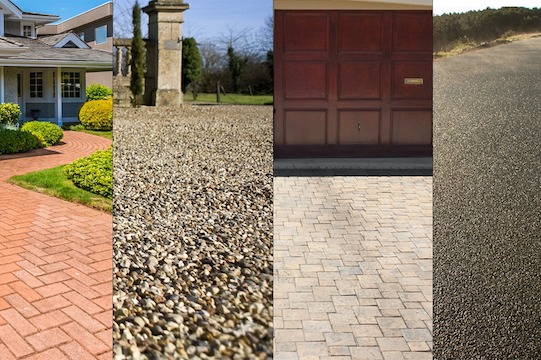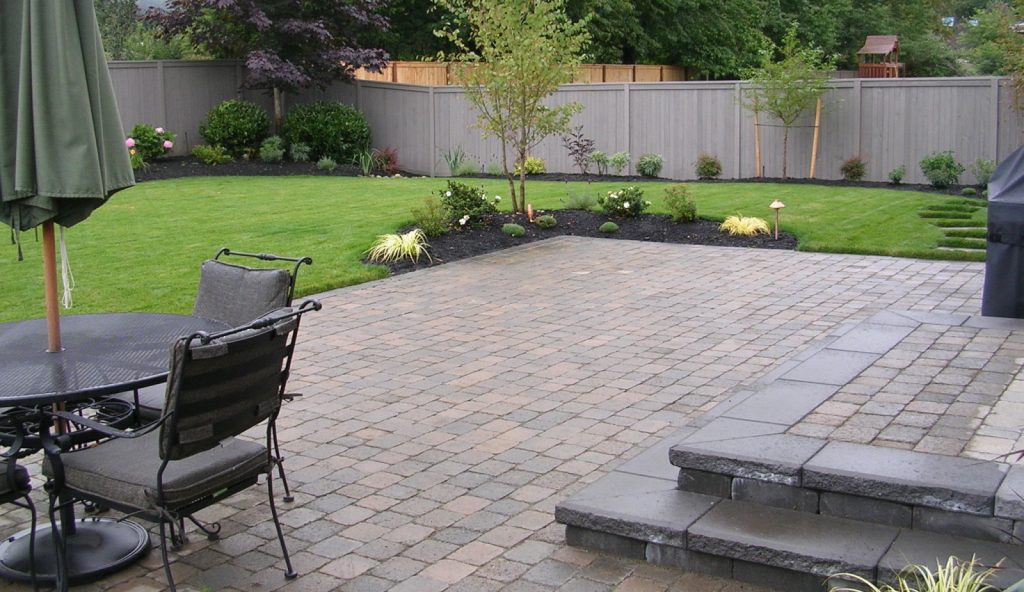Can’t decide if you want to use pavers or concrete or chipseal around your home? The choices are many – and it’s smart to follow a master design strategy.
One benefit of a well-considered landscape around a home is to pay attention to how the hardscape – pavers, concrete, asphalt, gravel, chipseal, etc. – blends with the softscape (plants, turf, trees, etc.). This is more than about aesthetics. It’s about the biophilia hypothesis.
Biophilia is about how natural environments affect our physical and mental health. Think of driving for miles in heavy traffic on a superhighway versus walking on water-worn pebbles adjoining a mountain stream, set among in a valley with trees all around. The first is stressful and the second quite the opposite, likely to alleviate stress.
Home outdoor environments can and should be stress relievers. And yet for utilitarian purposes, to walk on stable surfaces, most residential gardens have some kind of hardscaping that might surround a pool or provide a path to a gazebo or an outdoor kitchen or barbecue area. And of course, the driveway and transitional walkways around the sides of homes should not be afterthoughts – they count heavily in the “curb appeal” equation.
The skilled asphalt contractor, garden designer or landscape architect – or design-conscious homeowner – would choose one of the following materials for those places to walk:
Asphalt: Perhaps best suited to driveways, it’s not entirely wrong to think of asphalt as a sidewalk or even patio option. The biggest drawback would be the dark color of asphalt attracts and holds daytime solar heat. One fix for that is asphalt can be colored with a sealant – as on a tennis or basketball court – opening up several design options, including a lighter color to minimize heat gain.
Paving Stones: This would be among the pricier options, in part due to the labor-intensive method of installing it with a skilled, professional paving stone contractor. But not only does the aesthetic speak to quality – pavers tend to be long-lasting to the point of making them a great investment – but with so many options for brick types (natural stone, fired brick, and concrete) and colors, as well as patterns in which it can be laid out, this hardscape can be a strategic complement to other elements of the landscape and the home itself.
Concrete: As with asphalt, concrete is generally considered a driveway and sidewalk material. But you don’t have to go with your grandparents’ concrete. The modern, high-end concrete contractor has learned to be creative. With colored versions and stamped textures, there is a great range of what concrete can look like in front and back of the house.
Chipseal: This is actually a broad category with great variety – decomposed granite, pea gravel, lava rock, river rock, brick chips, marble chips, pond pebbles – that can serve as edging, filler between flagstone paths, or the full walkway, driveway or patio. Laid correctly and properly maintained, gravel is both permeable and calming. It’s no accident that Zen gardens often have elements of gravel and sand.
So while the options are many, do not stress. Study gardens on online design and photo platforms (Pinterest, Instagram, etc.) and call in a garden designer, landscape architect or installer with a design staff to identify what works best for you.


